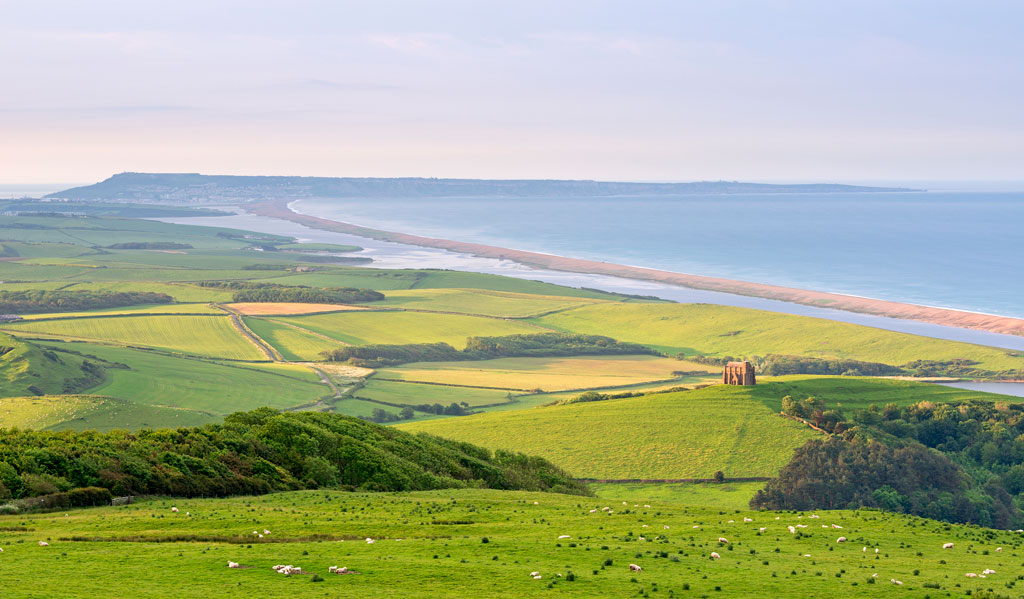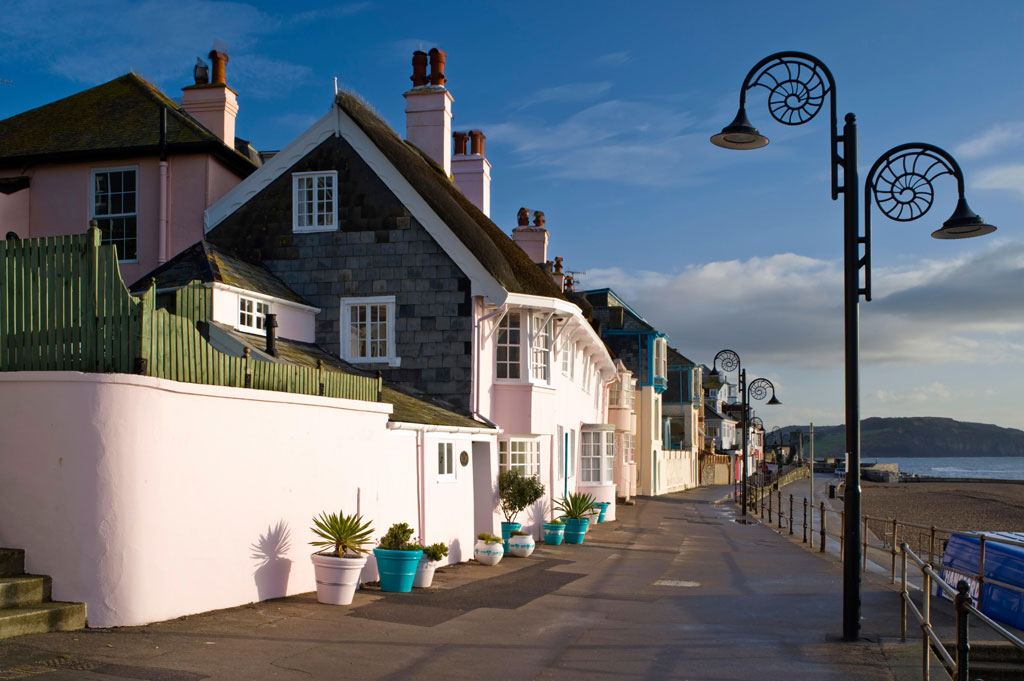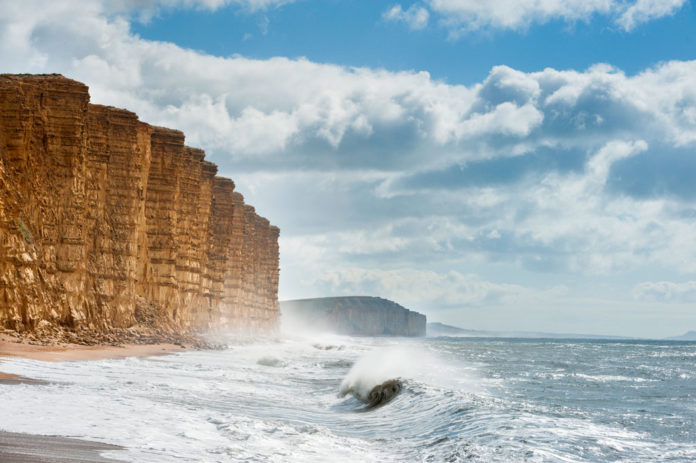A new film shines the spotlight on Dorset’s Jurassic Coast, one of Britain’s most captivating coastlines.
An impoverished fossil-hunter born in Lyme Regis, Dorset, in 1799, Mary Anning has long been a footnote in the history books, but a new film in 2020, Ammonite, starring Kate Winslet, aimed to change that.
Mary’s father died when she was just a child, and she spent her days wandering the coast around her home town, collecting the area’s abundant fossils to sell for the family’s upkeep. This rugged stretch of southwest England is now known as the Jurassic Coast, thanks to extraordinary evidence of 185 million years of history imprinted into
its rocky shores.
Mary’s efforts reaped rewards. Aged 12, she unearthed the 16ft fossil of a sea monster belonging to the genus now known as Ichthysaurus, followed by other startling finds. The theory of extinction was a new idea, and Mary’s finds were instrumental in proving that some species simply die out. At the time, though, women were not allowed to
join scientific societies and although she shared her groundbreaking discoveries with the luminaries of the day, as a woman – and a poor one at that – the pioneering palaeontologist was not given the credit she deserved.

Mary Anning’s birthplace (and her family’s fossil shop) is a good place to begin your tour of the Jurassic Coast. Now the Lyme Regis Museum, it tells Mary’s incredible life story and, naturally, has a world-class fossil collection.
The little town itself is full of atmosphere. Jane Austen visited twice and was so taken with the place that it appeared in her last novel, Persuasion. She describes “the principal street almost hurrying into the water, the Walk to the Cobb, skirting round the pleasant little bay, which, in the season, is animated with bathing machines and company…” Bathing machines aside, the scene is much the same these days, and the town has lost none of its Regency charm.
The high street, a jolly place of tearooms, fudge shops and little boutiques, dips steeply down to a seafront promenade fronted by colourful beach huts and thatched cottages. Look out for the outlines of ammonites embedded into the walls and paving stones.
The Cobb, Lyme’s historic harbour wall that snakes out to sea, had a starring role in another literary classic, John Fowles’ The French Lieutenant’s Woman. It was made into a feature film starring Meryl Streep as the title character, who stands alone at the end of the Cobb, staring mysteriously out to sea.
Lyme Regis makes the ideal base for forays along the 95-mile Jurassic Coast – whether or not you plan to dig up a fossil or two. First in a series of geological quirks east of Lyme is Golden Cap, a towering clifftop that’s the highest point on the south coast of England. At 191m high, it’s quite a climb, but from the summit breathtaking views stretch in all directions.

There’s more craggy scenery at West Bay, where gigantic honeyed cliffs are scored with deep striations, revealing falling sea levels from 175 million years ago.
Starting at West Bay, the mighty Chesil Beach is not just a sweep of shingle but a landmark in its own right, stretching some 18 miles along the coast. Crunch along the stones, allowing yourself to be buffeted by the wind and deafened by the waves. As John Fowles put it: “It is above all an elemental place, made of sea, shingle and sky, its dominant sound always that of waves on moving stone: from the great surf and pounding … of sou’westers, to the delicate laps and back-gurgling of the rare dead calm….”
The most magnificent view of Chesil Beach is from isolated St Catherine’s Chapel, high above the pretty village of Abbotsbury, a short detour inland. The 14th-century chapel was a place of pilgrimage for the monks of Abbotsbury Abbey. You can wander the abbey’s remains before exploring the nearby subtropical gardens, nestled in a woodland valley blessed with its own microclimate, and famous for its magnolias and camellia groves.
The Jurassic Coast reaches its most southerly point at the tiny Isle of Portland, a “tied island” attached to the mainland by Chesil Beach. “The peninsula carved by Time out of a single stone” – as local-born novelist Thomas Hardy described it – is renowned for the quality of its rock.
With a unique texture and grain, Portland stone was once the unofficial building block of London. Sir Christopher Wren, Member of Parliament for nearby Weymouth, controlled Portland’s quarries and popularised the use of the local stone. After the Great Fire of London in 1666, some 6 million tonnes of it were shipped from Portland to rebuild the capital. Over the years, historic landmarks such as Wren’s St Paul’s Cathedral, the British Museum and Buckingham Palace were made from this distinctive pale limestone.
For more on Dorset and Mary Anning, read the full article in BRITAIN Volume 88 Issue 1, on sale here.






 © 2024
© 2024